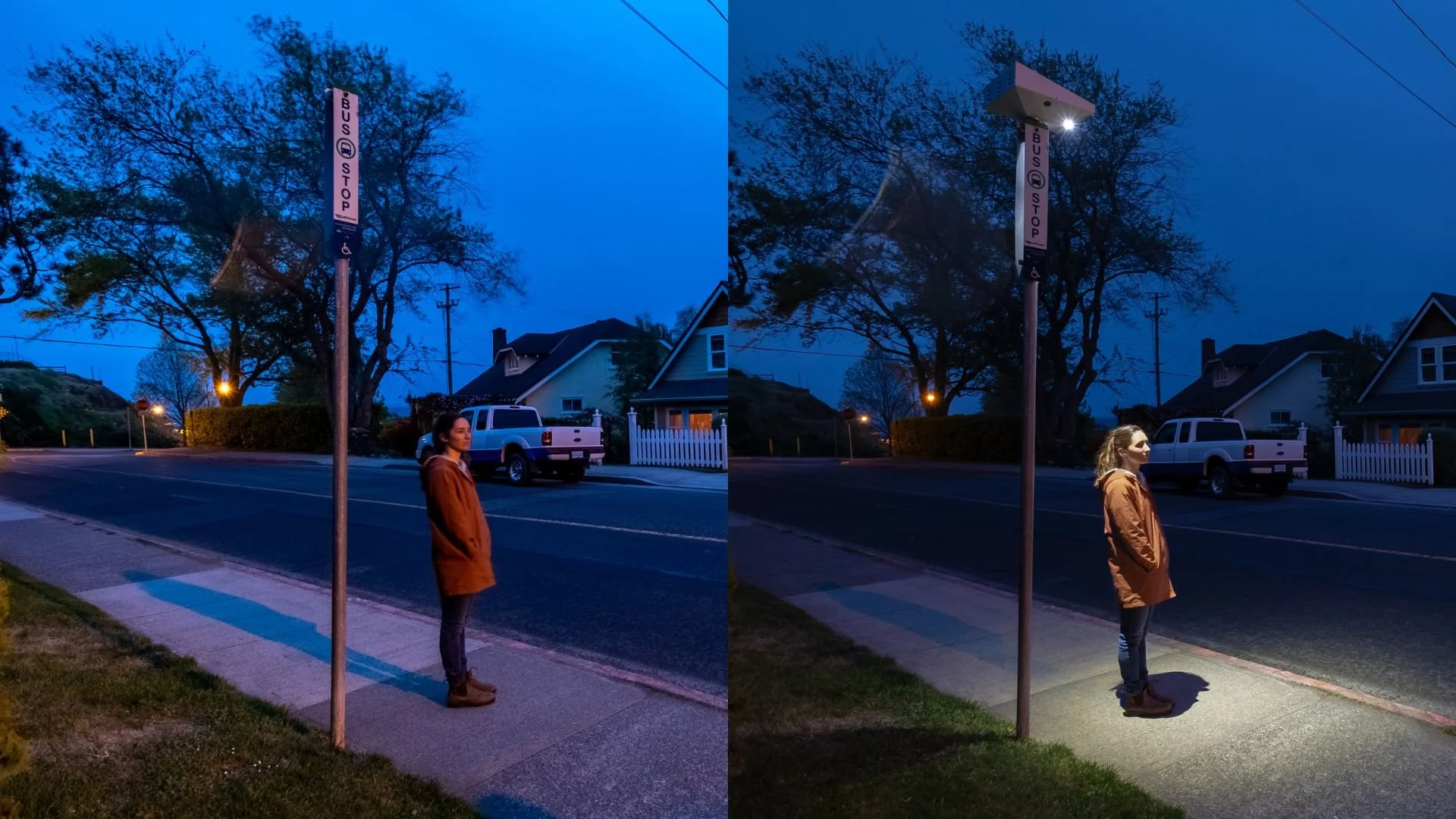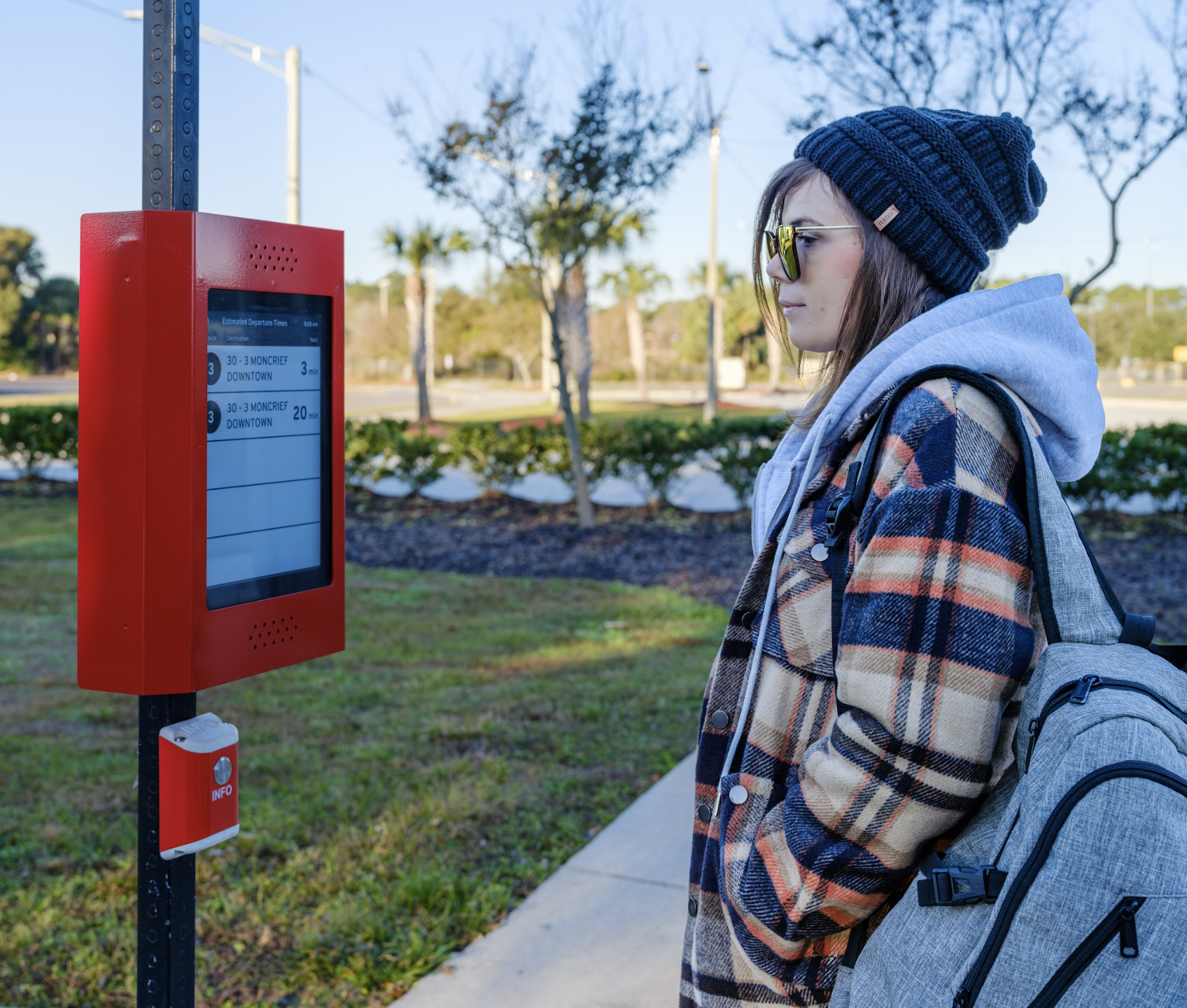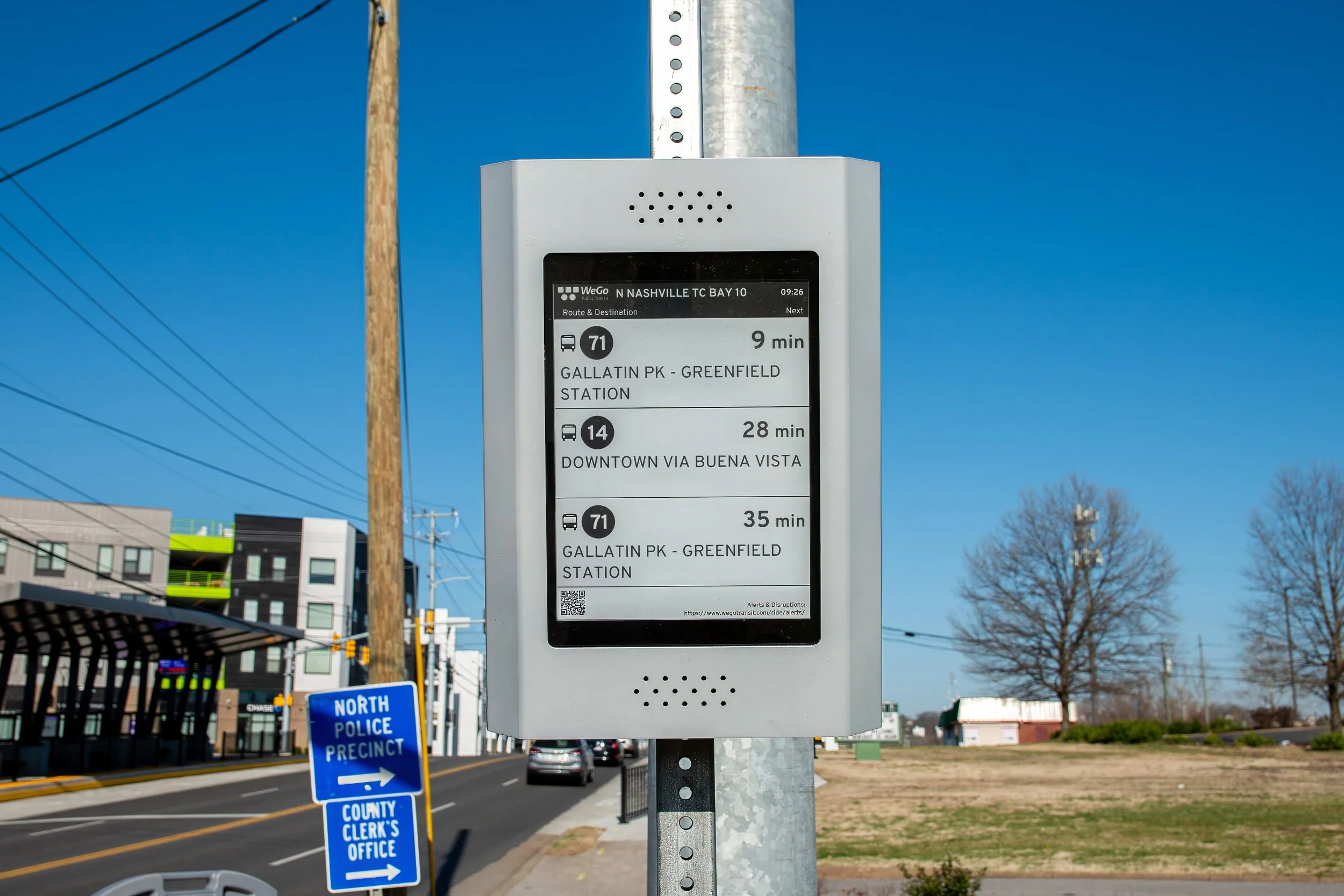Enhancing Transit Safety Through Real-Time Information and Solar Lighting
Public transit plays a vital role in our daily lives and keeping our cities moving by offering an affordable and convenient way to get around. However, safety concerns ranging from assaults to petty crime pose a risk to passengers and transit staff.
A recent study by the National Academy of Sciences, Engineering and Medicine, Mitigation Strategies for Deterring Transit Assaults (2025), highlights that actionable strategies like lighting, environmental design and community engagement can create safer transit environments.
Among some of the most effective strategies are: increased visibility, sufficient lighting and real-time information displays. These tools aid in deterring crime while creating a stronger sense of security for everyone.
The power of transit security lighting
Lighting isn’t just about illumination — it’s about visibility and perception. Properly designed lighting can dramatically reduce opportunities for crime. The study emphasizes that bright, well-maintained LED lighting, especially in white tones, improves visibility, minimizes hiding spots and encourages natural surveillance, allowing people to observe their surroundings and reducing criminal activity.
Thoughtful design choices like open-concept shelters and transparent windshields also enhance visibility. In partnership with Tolar Manufacturing, we can implement these features to maximize safety and passenger comfort. When areas are open and brightly lit, they naturally communicate that the space is safe and watched over, which helps to deter potential incidents.
Real-time information keeps everyone in-the-know
While lighting improves visibility, real-time information ensures passengers and staff stay aware and prepared. Digital displays are powerful tools for delivering:
Information in real-time
Digital signage can be installed at bus stops, stations or platforms. They provide real-time bus arrival information, service updates, emergency alerts, safety tips, route maps and important local information like whether alerts or public health advisories.
Increased awareness
By presenting clear, visible messages (available in multiple languages), digital displays help passengers and transit workers stay informed and anticipate potential risks.
Community engagement
Digital displays strengthen communication between transit agencies and the passengers by sharing reminders about support services and safety initiatives which help to foster a greater sense of security.
Creating safer environments with intention
In addition to lighting and real-time information, creating safer and more welcoming transit spaces relies on thoughtful design that reduces risks while building community trust. The S.A.F.E. Design Standard® applies proven CPTED (Crime Prevention Through Environmental Design) principles emphasizing visibility, access control and inclusive design. In combination, these strategies foster a sense of security, encourage ridership and create environments where people feel protected and connected.
Safer public spaces don’t happen by chance — they’re created intentionally. Research confirms that thoughtful lighting, advanced real-time information systems and smart environmental design are proven ways to deter crime and foster secure environments. By implementing these strategies, transit agencies can be a benchmark for safety, welcoming more riders to feel safe and confident in transit spaces.
Ready to take action?
Explore how solar lighting, digital displays and community-focused shelter designs can enhance safety, communication and deter crime in your community. Contact our team today to start transforming your transit stops.
Written by:
Jacqueline Langen
Jacqueline is a passionate writer with a background in journalism and experience across industries including news, travel, IT and renewable energy. When she's not crafting content, you can find her beach combing or surfing the waves of
Vancouver Island, BC.








